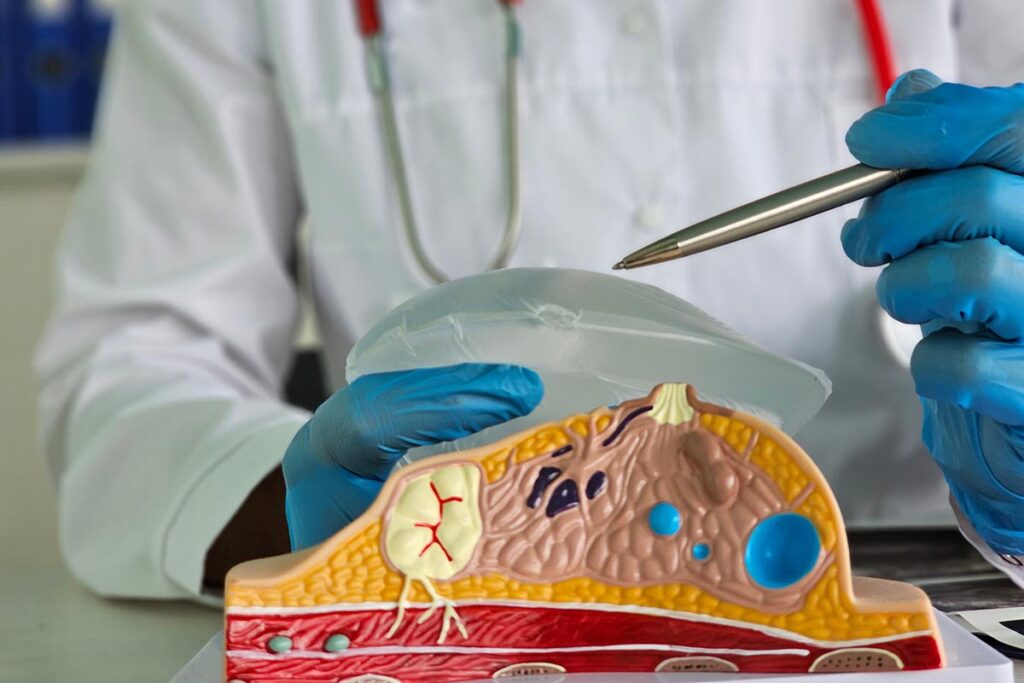Have you ever wondered what a ruptured silicone implant feels like? For many, this question arises due to sudden changes in appearance or discomfort that can be concerning. It’s not just a matter of looks—these symptoms can leave you worried and searching for answers. Understanding the sensations and visual signs associated with a rupture can help you take action with confidence and peace of mind.
Whether you’re already living with breast implants or considering them for the future, being informed is your best defense against complications. From subtle shifts in shape to more noticeable discomfort, knowing what’s normal and what’s not is empowering. Keep reading to uncover everything you need to know about the symptoms, causes, and solutions for ruptured implants.

Systemic Symptoms and Signs of Silicone Implant Rupture
When a silicone implant ruptures, the symptoms can vary widely depending on the individual. Some people notice immediate changes, like a distorted breast shape, while others may not experience any obvious signs. Symptoms can include swelling, pain, or hardening of the breast tissue. Because silicone leaks are often “silent,” regular check-ups are crucial to detect ruptures early. When in doubt, consulting a professional is always the best course of action. If the option is not available, always check for the following symptoms and side effects of implant rupture:
Change in Breast Shape or Size
A ruptured silicone implant can lead to noticeable changes in breast shape or size. The breast may appear uneven, smaller, or oddly contoured due to silicone leakage or deflation. These alterations are often gradual and may go unnoticed at first, especially in silent ruptures, making regular monitoring essential.
Hardness or Firmness in the Breast
A ruptured silicone implant may cause the breast to feel unusually hard or firm. This can result from scar tissue tightening around the leaking implant, a condition known as capsular contracture. The firmness may cause discomfort or visible distortion and often indicates a need for medical evaluation and potential corrective surgery.
Swelling in the Breast, Redness in the Breast
Swelling and redness in the breast can be signs of an inflammatory response to silicone leakage. When an implant ruptures, the body may react to the escaped gel, causing irritation, visible redness, or puffiness in the affected area. These symptoms should be promptly assessed to rule out infection or complications.
Breast Pain or Tenderness
Pain or tenderness in the breast may occur when a silicone implant ruptures, especially if the leaked silicone irritates surrounding tissues. The discomfort can be constant or occur when pressure is applied. While some ruptures are silent, any new or persistent breast pain warrants a thorough examination by a healthcare provider.
Tingling or Numbness in the Breast
Tingling or numbness in the breast can signal nerve involvement caused by implant rupture. As silicone leaks, it may press against or irritate nearby nerves, leading to unusual sensations. These symptoms may develop slowly and vary in intensity. Persistent tingling or numbness should be evaluated to determine the underlying cause.
Change in Nipple Sensation
A rupture in a silicone implant can lead to changes in nipple sensation, such as increased sensitivity, numbness, or a tingling feeling. These changes may result from pressure on or disruption of nerve pathways near the implant. Any noticeable difference in nipple sensation should prompt medical evaluation for underlying issues.
Fever, Fatigue, and Joint Pain (Rare Complication)
In rare cases, a silicone implant rupture may trigger systemic symptoms like fever, fatigue, and joint pain. These signs can indicate an autoimmune or inflammatory response to silicone leakage. Though uncommon, they should not be ignored, as they may point to a broader health concern requiring immediate medical attention.
What Causes Silicone Implants to Rupture?
Many patients ask how hard it is to rupture a silicone implant, and while silicone implants are designed to be durable, they aren’t indestructible. Several factors can increase the risk of rupture, including natural wear and tear over time. Here are some common causes:
- Overfilled or Underfilled Implants: Improperly filled implants can place unnecessary strain on the shell, leading to leaks or tears.
- Aging of the Implant: Over time, the implant shell can weaken, making it more prone to tears.
- Trauma or Injury: A direct impact to the chest area, such as in a car accident, can cause the implant to rupture.
- Capsular Contracture: This condition, where scar tissue tightens around the implant, can lead to rupture due to added pressure.
- Surgical Damage: Damage during the initial surgery or a subsequent procedure can compromise the integrity of the implant.

SPECIALIST CARE YOU CAN TRUST
You can trust the entire staff to help make your visit as comfortable and safe as possible!
How Long Can You Leave a Ruptured Silicone Gel Implant?
A ruptured silicone implant can theoretically remain in place indefinitely if it’s not causing any discomfort. Now, while the damaged shell doesn’t pose immediate health risks, leaving it in for too long can make the removal more complicated. For this reason, addressing the issue promptly helps ensure an easier removal process and minimizes potential risks.
Is Breastfeeding With Ruptured Silicone Implants Possible?
Even if a silicone implant ruptures, the material does not pose a risk to breast milk. Even saline from implants is naturally absorbed by the body, while silicone remains contained near the chest wall. This means that no matter the type of implant, breastfeeding remains safe even in the rare event of an implant rupture. However, this doesn’t mean it is desirable; as we said before, leaving the ruptured implants inside the chest for too long can make the removal process more complicated, so it is always recommended to contact your plastic surgeon if the event occurs.
Are Saline Implants Safer Than Silicone?
In some ways, yes—especially when it comes to rupture detection. Ruptured saline implants deflate noticeably when they rupture, making the issue immediately visible. In contrast, ruptured silicone implants are often “silent,” with no obvious symptoms until detected via imaging or after some of the symptoms we’ve mentioned become too apparent. However, this doesn’t necessarily make saline the superior option. Silicone breast implants are known for a more natural look and feel, and both types are FDA-approved with strong safety records. Ultimately, safety depends less on the filler and more on the surgeon’s skill, implant quality, and long-term monitoring. If safety is your priority, routine check-ups are essential regardless of implant type.
Choosing the Right Plastic Surgeon Matters for Breast Surgery
Selecting the right plastic surgeon for your breast augmentation is one of the most important parts of the process. This delicate procedure requires a high level of expertise and experience to achieve the best results. Experienced surgeons also work with the best materials and techniques, which minimize the risk of implant rupture or the need for revisions later on. Using high-quality implants is equally important in ensuring both safety and long-term satisfaction.
At Aesthetic Surgical Images, we pride ourselves on offering top-tier care in Omaha. Our team consists of board-certified plastic surgeons with decades of experience performing breast augmentations and other breast procedures. We use only the highest-quality breast implants to provide beautiful, lasting results. If you’re considering breast augmentation or need help with your current implants, contact us today to schedule a consultation and experience the best care possible!
